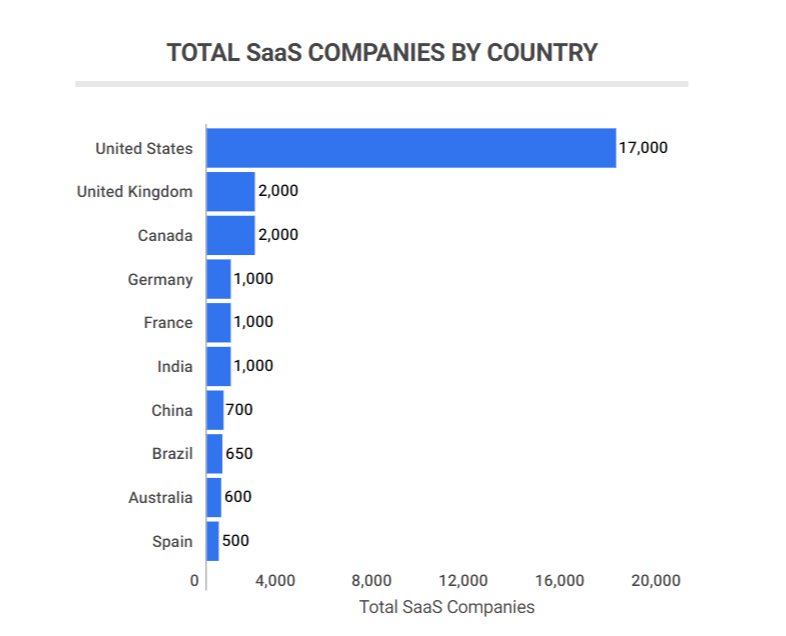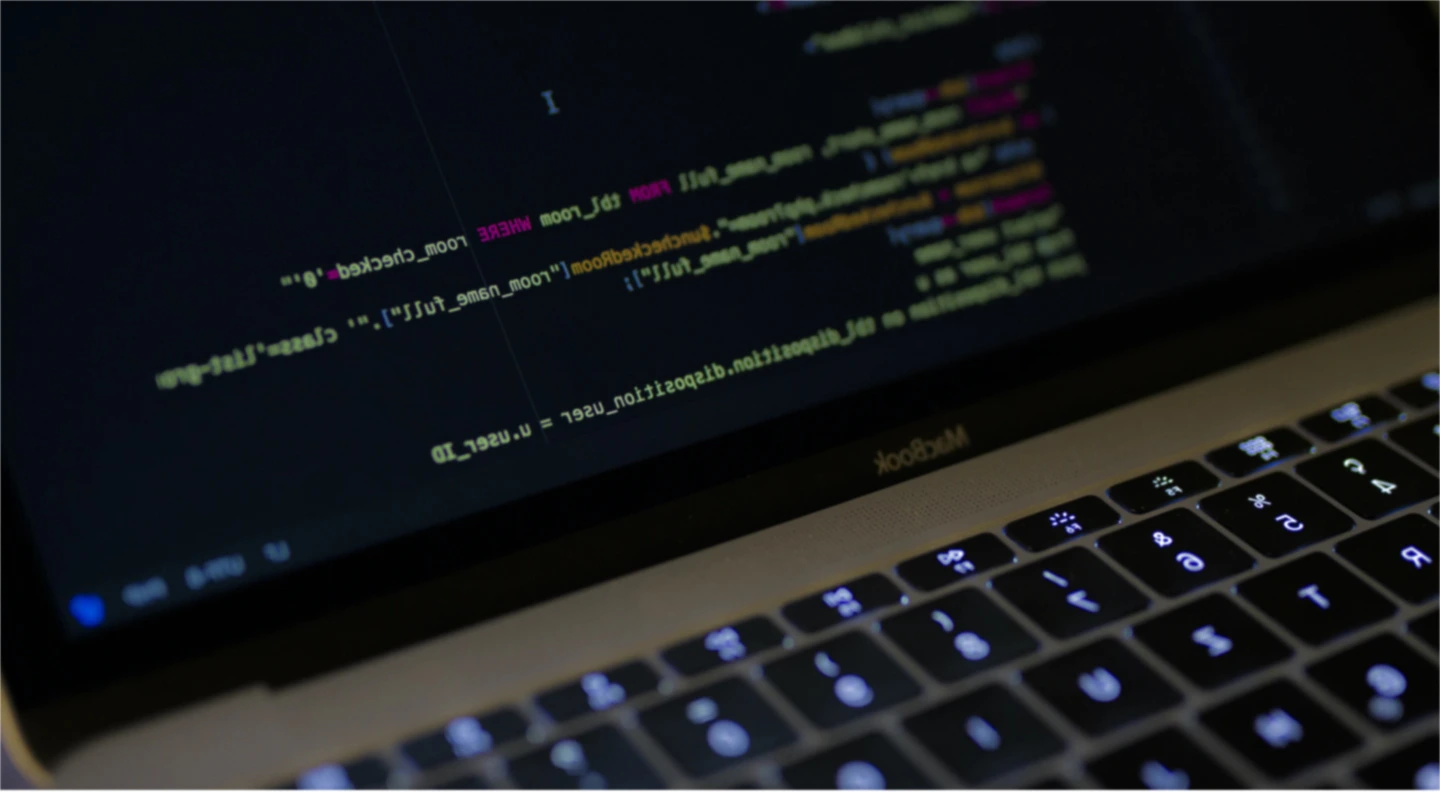How Much Does It Cost to Build a SaaS Product in 2023: Budget and Capitalizing with Real Examples
As of 2022, the number of SaaS startups in the U.S. alone is estimated at 17,000, and the total number of SaaS startups worldwide is more than 30,000. At the same time, the market size is only growing. According to the study, software as a service market is projected to expand to $328.03 billion by 2027, with a compound annual growth rate (CAGR) of 6.6%

With this state of affairs, it is natural that a lot of talented entrepreneurs want to jump on this train. However, two important questions arise at the idea formation stage: how much it will cost and how to make the project profitable. This is what we will talk about in this article. Read on to find out how much does it cost to build a SaaS platform, how to calculate the budget correctly, and explore a real example of SaaS development costs. We will do it with the help of the expertise of FH Solutions specialists engaged in the development of first-class software.
Why Estimation the Cost of Building a SaaS product is Important
Unlike out-of-the-box software, SaaS development has its own peculiarities, and therefore the cost should also be calculated with them in mind. First of all, to estimate the cost you need to have a clear list of requirements at the initial stages and a clear development plan. Without them, it would be impossible to calculate the potential SaaS development costs and bring the project to success.
In addition, when you build SaaS application you should regularly update and refine it, which should also be taken into account during SaaS budget planning. You’ll have an opportunity to constantly update the software and expand its list of features by providing users with new services. Due to this, when calculating costs, they can be segmented by distributing them to different time intervals in accordance with the product development plan.
Also, when calculating the SaaS company development costs, it is crucial to take into account the costs of its support and maintenance. This also includes scaling, as you are interested in the constant inflow of new users and their retention.
Factors That Impact SaaS Development Costs
Now let's break down the key factors that matter when expensing development costs SaaS. Some of them are applicable to the development of any software, but, as we have already said, the creation of a SaaS project has its own peculiarities. Let's take a closer look at this issue.

Scale
One of the most important factors is the scale of the project. The cost will vary greatly depending on whether your SaaS product will be a small tool that performs one or a few useful functions or a large-scale platform that covers a wide range of needs. While a small micro-SaaS project may cost around $15,000, the cost of developing a full-fledged platform can reach $500,000 or more.
Features
As in any other software, the cost of a SaaS product is influenced by the number of SaaS components, and therefore the number of hours spent on their development. You don't have to make your project a jack of all trades from the very start. Nevertheless, no SaaS project can do without:
- Functions for user management;
- Security functions;
- Communication features;
- Billing functions. ㅤ
Development Geography
Development in some regions will cost you much less than in others. If you are in the US, for example, the decision to create your own in-house team or to use specialists from other regions will have a significant impact on the final price tag. Of course, having an in-house team is a confidence booster for some business owners. However, in reality specialists from your city or country usually have the same level of skills as developers from another region. At the same time, by hiring offshore experts you can reduce SaaS forecast development costs by 40%-60%.
Platform
Of course, the more platforms there are, the higher the SaaS development cost will be. Adaptation of the project for mobile devices also costs money, but absence of mobile version can be critical depending on the client segment. In general, it is considered that for b2b services it’s better to build a web version, as about 70% of people use such services to work from PCs or laptops. For b2c services, you have to create the mobile version, as 50-60% of people access the services from their phones.
Technology stack
The set of technologies used is another factor that directly affects the cost of the service, as well as its profitability. When choosing the tech stack, pay attention to the number of available libraries and frameworks, as well as to marketing issues i.e. availability of specialists, their salary level, and so on. The most common answer would be JavaScript both on the client side (Angular, React, Vue. js) and on the server side (Node. js). It can also be used on smartphones (React Native).
SaaS Development Costs Breakdown for 2023
So now let's understand what the cost of building a SaaS product is made up of. According to rough calculations, developing a SaaS application will cost you $50,000-$500,000. This is a very approximate fork and it doesn’t have to be limited to this range. A small SaaS project can cost $10,000, and for a huge multifunctional platform, only sky is the limit. Nevertheless, these figures give a rough idea of what to expect. What does this cost consist of? Let's find out by exploring an example project plan for SaaS development costs.
Interface design
After the preparatory stage with planning and validation of ideas comes the stage of user interface design. This stage is extremely important, because if you want the number of your users to grow, the application should look good and feel good, that is, have a logical and intuitive interface. This is what UI/UX designers do at this stage.
| Stage of development | Approximate timeline | Hourly rate range | Average cost |
|---|---|---|---|
| UX design | 3 weeks | $35–$60 | $4,200–$7,200 |
| ㅤ |
Coding
| Implemented feature | Approximate time | Hourly rate range | Average cost |
|---|---|---|---|
| Creating documents and uploading files | 1–3 weeks | $33–$53 | $1,320–$6,360 |
| Search | 1–2 weeks | $33–$53 | $1,320–$4,240 |
| Preview and download | 2–4 weeks | $33–$53 | $2,640–$8,480 |
| Sharing, access tool, export | 1–2 weeks | $33–$53 | $1,320–$4,240 |
| File management | 10–12 weeks | $30–$50 | $12,000–$24,000 |
| Push notifications | 2–3 weeks | $30–$50 | $2,400–$6,000 |
| Search | 4–6 weeks | $30–$50 | $4,800–$12,000 |
| Previews | 2–4 weeks | $30–$50 | $2,400–$8,000 |
| Export | 2–3 weeks | $30–$50 | $2,400–$6,000 |
| ㅤ |
Testing
After the code is ready, it should be tested. This is done by QA engineers. Their task is to check different usage scenarios and also to find errors in the code that may cause the application to crash. Usually, testers combine manual testing with automated tools to find bugs. This process is carried out in parallel with coding, as it is easier to test a separate part of the application than to find out what went wrong in the finished product with a lot of interdependent parts.
| Stage of development | Approximate timeline | Hourly rate range | Average cost |
|---|---|---|---|
| QA Testing | 20 weeks | $25–$50 | $20 000–$40 000 |
| ㅤ |
Post-release support
This stage includes adding new features, as well as maintaining the software in a workable and up-to-date state. It is hard to calculate the expenses for this stage because the number of new features and the expenses for the software operation depend only on your vision of the product development.
3 Real Examples of SaaS Product Development Costs
Now let's look at specific examples of how to estimate a SaaS product development costs. As a rule, companies don’t disclose the amount of money spent on creating their products. However, we can calculate how much it will cost to create an analog of such an application based on the available functionality and data on SaaS software development costs.

Slack
Many software development companies are familiar with Slack. It is a convenient platform for work communication equipped with everything necessary for convenient messaging, tasking, reminders, calls, etc. The key functionality of such an application is as follows:
- Messaging
- Apps integration
- Reminders
- Audio and video calls
- Channel privatization
- Messaging channels ㅤ
Creating an app of this type will cost a business owner about $70,000, not including the cost of support and adding functionality.
Pipedrive
This is another popular CRM platform in the business environment. Its main function is to visualize the sales process and maximize the number of leads. The list of Pipedrive key features includes:
- Sales automation functionality
- Calendar
- Tools for marketing automation
- Reporting & analytics tools
- Customer support
- Social media integration ㅤ
Building SaaS CRM will cost somewhere around $60,000. However, this figure is only valid for a minimum viable product (MVP). If you want to attract more customers in this segment you need unique features, and their development can increase the cost many times over.
Hotjar
This is a platform designed for marketers, which helps to track user activity on the site. It’s quite a complex project that combines a lot of tools for marketing professionals. Accordingly, the price tag for such a service will be quite high. Among the main functions of Hotjar are:
- Creating heatmaps of sites
- Recordings
- Formation of Surveys
- Feedback tools
- User interviews tools
- Funnels
- Dashboard ㅤ
This is one of those cases where we know the example of SaaS product development costs from the words of the company founder. According to him, it cost him €150,000 to launch the project, including marketing, advertising, and even taxes.
Why Is It Important To Capitalize SaaS Development Costs?
If a company records all software development costs as expenses, it may result in quite unpleasant final figures and the payback of such a project will be under a big question. For startups, it will be much better to capitalize SaaS startup costs and record them in the company's assets.
Typically, startups may start capitalizing SaaS development costs after a preliminary phase during which requirements are developed, architecture is defined, and feasibility is assessed. If after this stage the project is approved and financed, further costs of developing the SaaS platform can be considered an asset.
Yes, this will complicate accounting, but with capitalized software development costs SaaS will start to bring revenue much sooner and provide investors with acceptable revenue figures. In particular, the following points may be subject to capitalization of software development costs SaaS:
- Interface design
- Coding
- Configuration
- Implementation
- Testing ㅤ
At the end of the above processes, you’ll have a finished product as your asset. In turn, the funds spent on its maintenance, support, and revision should be considered as expenses. So, does a SaaS business have to capitalize software development costs? It’s rather arbitrary option but it will help you a lot for sure.
How to Reduce SaaS Software Development Cost

Remove non-key functionality
Even a simple-looking functionality may be expensive to implement, but still not play an important role in the project. It is necessary to identify the key features, as well as evaluate the cost and importance of the minor ones. Finally, you should decide what to give up and what to keep. You can first create an MVP that will have a set of only necessary functions. This way, at lower costs, you can understand how you want to develop your project further.
Optimize the team
The work of non-key specialists can be abandoned, which can reduce the cost of development several times. For example, the presence of front-end developers, back-end engineers, and designers is always crucial for the project, but the presence of a business analyst depends on your needs and capabilities.
In addition, at the planning stage, you can choose a common technology stack that is optimal for a particular task. If you choose rare technologies, then you may have problems with finding specialists. It’ll always be easier for you to find developers who know JavaScript, Python, or PHP, but finding engineers who know Ruby can greatly delay the search for staff and the cost of such professionals will be higher. Among backenders, there are relatively many specialists in ASP.Net, Django, and Node.js.
Choose the best hosting
Developing a SaaS project you will one way or another have to host it on a hosting service capable of handling a large number of customer requests. Hosting will be a constant expense that can burn a hole in the budget, and moving from one hosting to another will always be a labor-intensive and expensive process. By initially choosing the hosting with the best pricing you can significantly reduce your hosting costs in the future.
Use outsourcing
You may hire specialists onshore and personally monitor their work on the project every day. But let's be honest, you won't do that, and no one will give you back the time spent searching for specialists and onboarding them. Moreover, the price for developers' work in North America and Western Europe can be much higher than in other regions. Still, you can turn to specialists from regions where the cost of an hour of development is lower and the quality of work is high. For example, clients from Western Europe and the United States can save up to 40-60% by using the services of the Eastern European outsourcing market.
Use ready-made solutions
If you need relatively simple functionality, you can turn to a template solution: it is cheaper and faster. For this purpose, there are service designers, CMS, and other solutions that are easier to integrate into the project than to develop from scratch. This approach can significantly reduce the cost of the project, although only custom development can take into account all individual requirements. This is especially relevant in today's world, where projects are often equipped with solutions based on AI and machine learning. This level of functionality cannot be developed by an ordinary company, but integrating their APIs into your product is a feasible task.
How “FH Solutions” Can Help in Developing Cost-Effective SaaS Product
Having gone all the way from idea formation to accounting SaaS development costs you’ll face the need to find developers who can create a high-quality and cost-effective SaaS product. And that's exactly what FH Solutions does. Our company specializes in the development of modern software, created in full compliance with your vision and the latest industry standards. Our team consists of 17 experienced specialists, boasting an average of 6 years in software development. Our experience, expertise, and teamwork allow us to find non-standard approaches to well-known challenges and deliver the best possible result.
We will ensure the smooth development of your project in full compliance with the agreed budget and deadlines. Moreover, if necessary, we will advise you on how to optimize the cost of your SaaS project and overcome your expectations.
However, you should not take our word for it. Make sure of our abilities and capabilities by studying our cases. For example, check out our BizBoost project. It is a platform for fast business funding to SMEs in South Africa. In just 8 months we have managed to create a high-end platform that leverages advanced algorithms to assess loan applications, ensuring businesses get the right amount of funding based on their needs and financial health.
Check out our other case studies or contact us to get started on your project as soon as possible.
Key Takeaways

So let's summarize. The main factors that affect the final cost of the SaaS product will be the scale of the project, the number of features in it, the technology stack, the potential list of platforms, and the developer rates.
On average, the final cost of a SaaS platform will be $50,000-$500,000. However, each project is different and costs may increase with the addition of new features. Examples of successful projects show that a workable application can start operating with an investment of $50,000 - $150,000 dollars.
In order to reach payback sooner and provide investors with more attractive forecasts, startups should capitalize the funds spent on the development itself. Once this is done, the money spent will be considered an asset, and all subsequent support costs will become an expense.
Reducing the cost of a SaaS platform can be done by cutting non-key functionality, optimizing the team, using third-party applications, and choosing the right hosting. In addition, outsourcing development to specialists in a region where the average rate per hour of developer work is lower will help to significantly reduce the cost.




